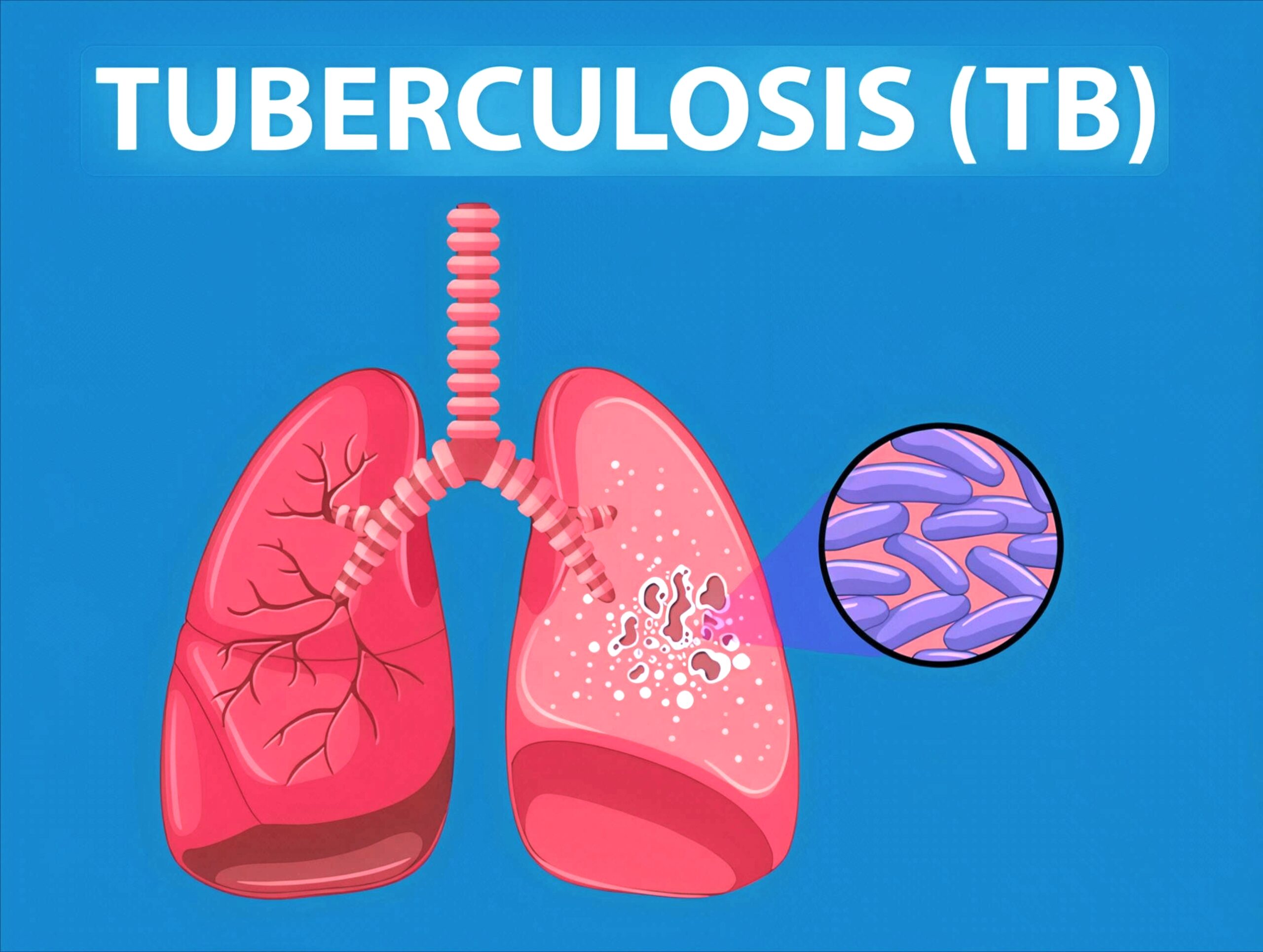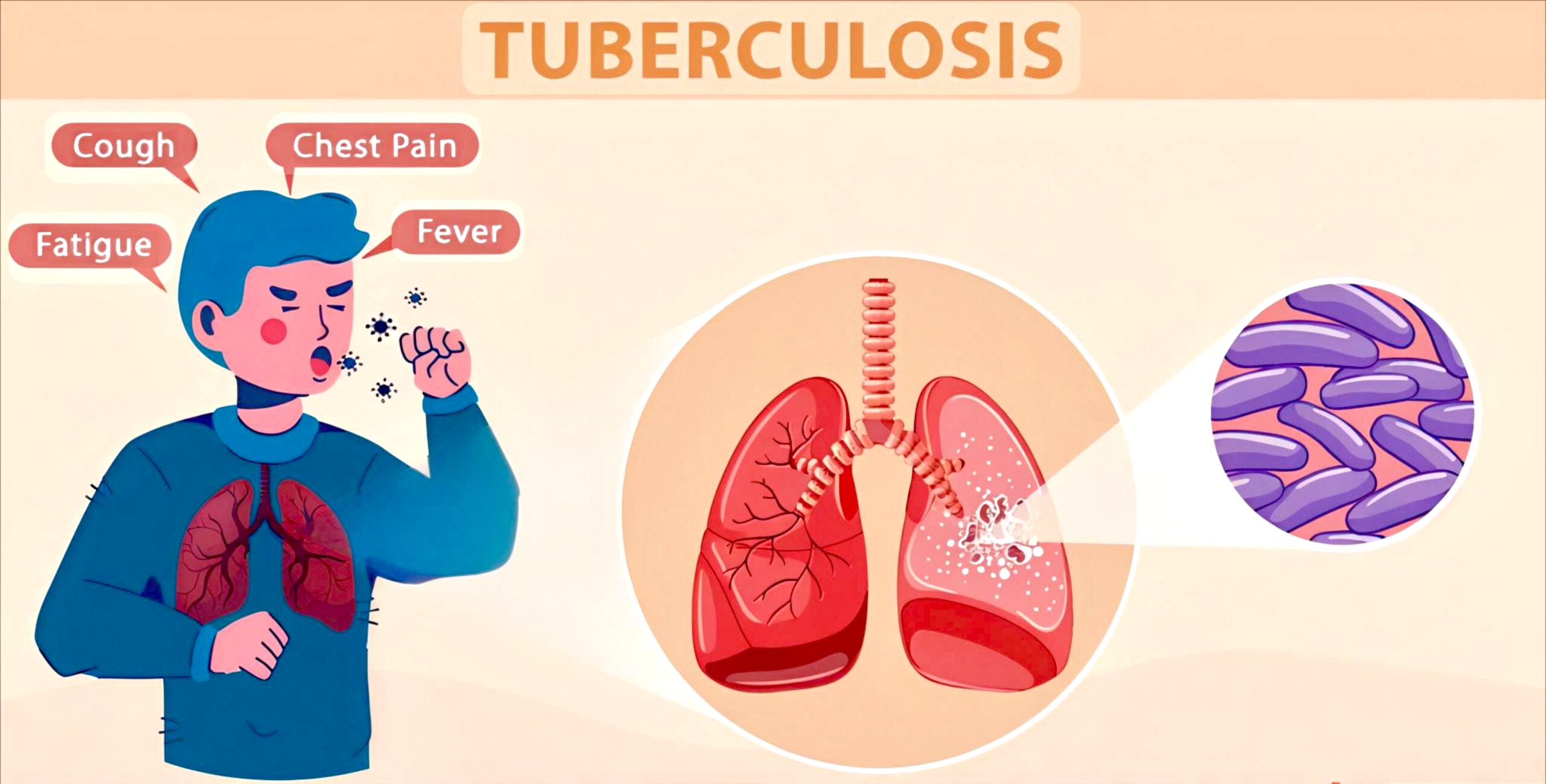Learn about tuberculosis (TB), its symptoms, causes, prevention, and treatment options. Discover how TB spreads and ways to protect yourself from this infectious disease.

What is Tuberculosis?
Tuberculosis (TB) is a contagious bacterial infection caused by Mycobacterium tuberculosis. It primarily affects the lungs (pulmonary TB) but can also spread to other organs (extrapulmonary TB). TB remains a major global health concern, especially in developing countries, despite being preventable and curable.
According to the World Health Organization (WHO), about 10 million people fall ill with TB each year, and 1.5 million die from the disease. Early diagnosis and treatment are crucial to controlling its spread.
How Does Tuberculosis Spread?
TB spreads through the air when an infected person coughs, sneezes, or talks, releasing tiny droplets containing the bacteria. However, not everyone exposed to TB becomes infected. The risk increases if you:
- Have a weakened immune system (e.g., HIV/AIDS, diabetes)
- Live or work in crowded, poorly ventilated areas
- Are in close contact with an infected person
- Smoke or misuse alcohol
Symptoms of Tuberculosis
TB symptoms vary depending on whether the infection is latent (inactive) or active.
1. Latent TB Infection
- No symptoms
- Not contagious
- Detected through a TB skin test or blood test
2. Active TB Disease
- Persistent cough (lasting 3+ weeks)
- Coughing up blood or mucus
- Chest pain
- Fatigue and weakness
- Fever and chills
- Night sweats
- Unintentional weight loss
If left untreated, TB can be fatal. Extrapulmonary TB (affecting kidneys, spine, or brain) may cause additional symptoms like back pain or seizures.

Diagnosis and Testing for TB
Doctors use several tests to diagnose TB:
- Tuberculin Skin Test (TST/Mantoux Test) – Detects exposure to TB bacteria.
- Interferon-Gamma Release Assay (IGRA) – Blood test for TB infection.
- Chest X-ray – Checks for lung abnormalities.
- Sputum Test – Examines mucus for TB bacteria.
Treatment Options for Tuberculosis
TB treatment depends on whether the infection is latent or active.
1. Latent TB Treatment
- Isoniazid (INH) – Taken for 6–9 months.
- Rifampin (RIF) – Taken for 4 months.
2. Active TB Treatment
- First-line drugs: Isoniazid, Rifampin, Ethambutol, Pyrazinamide.
- Treatment lasts 6–9 months to ensure complete recovery.
- Drug-resistant TB requires longer treatment (up to 2 years) with stronger antibiotics.
Important: Skipping doses can lead to drug-resistant TB, making treatment harder.
Preventing Tuberculosis
1. BCG Vaccine
- The Bacille Calmette-Guérin (BCG) vaccine helps prevent severe TB in children.
- Not widely used in low-risk countries but recommended in high-risk areas.
2. Infection Control Measures
- Avoid close contact with infected individuals.
- Ensure proper ventilation in living spaces.
- Wear masks if caring for a TB patient.
3. Strengthening Immunity
- Eat a nutrient-rich diet (vitamins A, C, D, and zinc).
- Exercise regularly.
- Avoid smoking and excessive alcohol.
Conclusion
Tuberculosis remains a serious but treatable disease. Early detection, proper medication adherence, and preventive measures can significantly reduce TB cases worldwide. If you experience persistent cough or other TB symptoms, consult a doctor immediately.
By raising awareness and improving healthcare access, we can work towards a TB-free future.
FAQs About Tuberculosis
Q: Is tuberculosis curable?
A: Yes, with proper antibiotic treatment, TB is curable.
Q: How long does TB treatment take?
A: Treatment typically lasts 6–9 months for active TB.
Q: Can TB come back after treatment?
A: Relapse is rare if treatment is completed, but reinfection is possible.
Q: Is TB contagious?
A: Only active pulmonary TB is contagious.
Stay informed, stay safe! Share this article to spread TB awareness.
